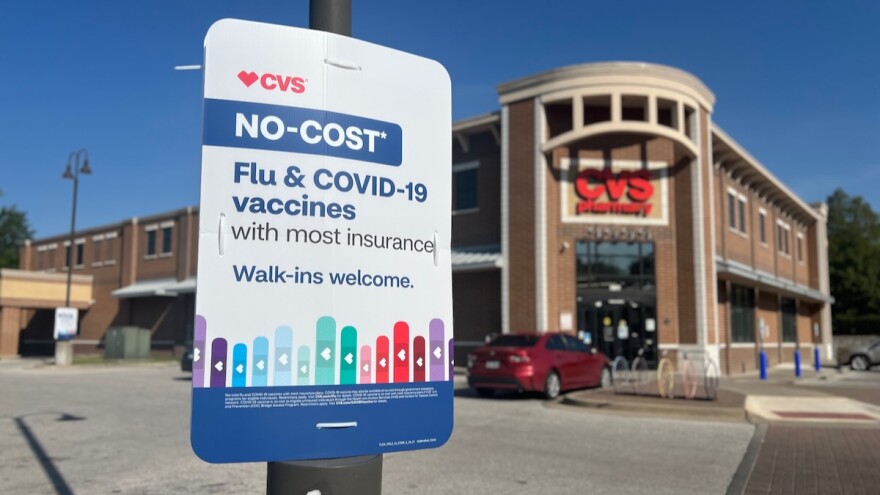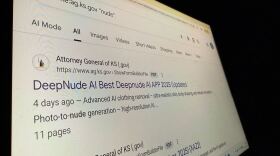A summer COVID wave fueled by a highly contagious variant, increased travel and hot days that crowded people indoors may be starting to ebb in the Kansas City area.
Health officials said they hope that surge prompts far more people to sign up for the new COVID vaccine, which could reach area pharmacies next week. The new shot was approved last week and is recommended annually for people 6 months and older.
Jump down to answers about how to get the vaccine and what it might cost you.
“Please take advantage of it,” said Dr. William Schaffner, a professor of infectious diseases at Vanderbilt University Medical Center. “Roll up both sleeves. Get your flu shot and your COVID shot.”
Last year, the U.S. Centers for Disease Control and Prevention reported that fewer than a quarter of adults actually got the new COVID vaccine.
Getting the updated vaccine, doctors agree, is the best way to prevent serious illness and reduce the risk of developing long COVID, a lingering and often debilitating condition that can leave a person with symptoms for months or years.
But since the federal government lifted its public health emergency in May 2023 and stopped providing the vaccine for free, public health officials have worried about how some people would afford it. Cash price for a shot can top $100.
People covered by Medicare, Medicaid and most private insurance can still get the shot for free or for a small fee. And a $1 billion federal program made free shots available to people without insurance last year. But funding for that program was expected to run out at the end of August.
Some area health departments, including the Wyandotte County Public Health Department, had said they wouldn’t have any free shots for uninsured adults this year. And Vibrant Health, a Wyandotte County health clinic, said it’s still unsure how many free shots will be available to its uninsured patients this fall.
But as federal funding was scheduled to dry up, the government announced it had found money to help cover at least some of the gap.
Kansas expects to get around $780,000 of the newly found federal aid, enough to cover about 9,380 COVID doses. The state, which hasn’t expanded Medicaid, has nearly 250,000 residents who lack health coverage.
Jill Bronaugh, spokesperson for the Kansas Department of Health and Environment, said the shots would be “equitably distributed” across the state to local health departments, community health centers, rural health clinics and other vaccination locations.
Missouri got word last week that it would get just over $1.1 million of the federal funds. That means the state can buy around 12,000 COVID shots. The state, which has expanded Medicaid, still has more than 500,000 uninsured residents, according to 2022 data.
Lynelle Paro, chief of Missouri’s Bureau of Immunization in the Department of Health and Senior Services, said the shots will be made available to public health departments and to some federally qualified health clinics, including Samuel U. Rodgers Health Center, KC CARE Health Center and Swope Health.
Dr. Mark Steele, University Health’s chief clinical officer, said people at lower risk of getting really sick from COVID could consider waiting to get the updated shot until late September or early October. That could extend protection into the holiday season.
But doctors warn about putting it off any longer. The virus is sure to surge again once the weather turns cold, a new variant likely takes hold and people go back inside.
“If you’re an individual at high risk and it’s been two months or more since your last COVID update, err on the side of (getting the new shot) sooner rather than later,” Steele said.
Here’s what else you should know about the latest shot and what steps to take if you get infected.
Where can I get the new COVID vaccine and how much will it cost?
Many pharmacies offer the vaccine on a walk-in basis. Retail chains like Walgreens and CVS let you sign up through their websites. People covered by Medicare, Medicaid and many private insurance plans still can get the COVID shot for free, but you may have to pay an administration fee. Some area health departments charge $20 to give you the shot, even if you don’t have insurance. Many federally qualified health centers, such as KC CARE, provide the shot for free to uninsured and underinsured patients. Uninsured and underinsured minors get the shot for free through a federal program known as Vaccines for Children.
What variant is the latest vaccine targeting?
The newly approved mRNA vaccines, from Moderna and Pfizer, target the KP.2 strain of the virus. KP.2 is one of the FLiRT variants, the highly contagious versions of COVID that fueled this summer’s surge.
If I had COVID recently, how long should I wait to get the new COVID vaccine?
Doctors said you can wait up to three months after an infection to get the new vaccine. That’s because you will develop immunity from having the virus.
How long will the vaccine protect me?
Steele said you can expect the shot to keep you from getting sick for about three months. The vaccine will protect you from getting seriously ill for at least six months. Older adults and patients with underlying health conditions may be advised to get a second shot midway through the year.
If I get sick, when should I test?
Test when you have symptoms, said Dr. Sarah Boyd, an infectious disease doctor at St. Luke’s Health System. And don’t assume you’re COVID-free if one home antigen test shows a negative result. When a cough, sore throat or other symptoms persist, you should test a second time 48 hours later to rule out COVID.
If I am exposed, when should I test?
If you know you’ve been exposed and you don’t have symptoms, you should test five days after exposure. Unless symptoms develop, you don’t need to repeat the test, Boyd said.
Where can I get COVID tests?
Beginning in late September, you will be able to order four free tests from the federal government. Tests are available to buy at most drug stores or online, but that can cost $6 a test or more. No-cost testing is still available at some pharmacies for people without insurance who have been exposed to COVID or have symptoms.
If the test is positive, do I need to stay home?
The CDC recommends that if you test positive, you should avoid contact with others. Once your symptoms are improving and you have been fever-free for 24 hours, you can go back to school or work — as long as you’re not returning to a health care setting. But when you go back into the world, you should take precautions like wearing a mask for five additional days.
Should I consider taking Paxlovid if I test positive?
It’s a good idea to check in with your doctor if you test positive, Boyd said. They may recommend that you take Paxlovid, an antiviral medication that can prevent serious illness. Testing and determining that you have COVID is especially important for people at higher risk because Paxlovid must be started within five days of getting sick.
How can I reduce my risks of getting long COVID?
The best strategy to avoid long COVID is to avoid being infected in the first place, experts said. Wear a mask in crowded places, practice good hand hygiene and avoid touching your eyes, nose and mouth when in public. Most importantly, stay up to date on the vaccine. Like the flu shot, updated COVID vaccines are tweaked to more closely match and repel the virus variants that are circulating.
This story was originally published by The Beacon, a fellow member of the KC Media Collective.
Copyright 2024 KCUR 89.3







